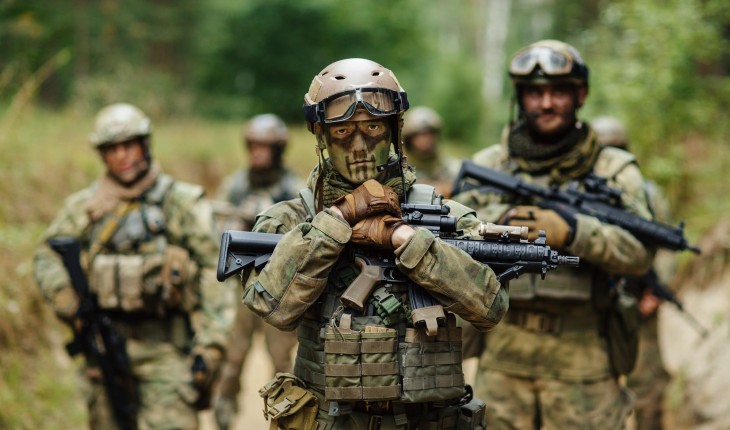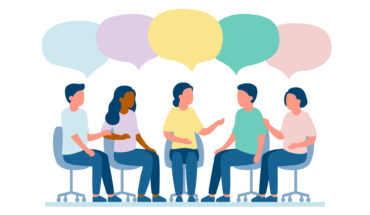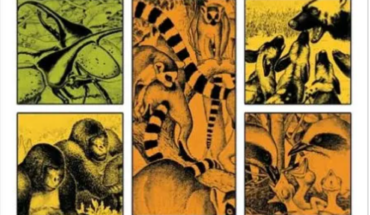By: Anthony Lopez – The Evolution Institute
One of the most familiar by-products of conflict between groups is the explosion of solidarity within them. This reliably powerful human dynamic is evident at many levels of social organization, and researchers have poured considerable energy into examining the psychological mechanisms that facilitate this phenomenon. For example, a paper by Puurtinen and Mappes (2009) published in Proceedings of the Royal Society B provides experimental evidence that within-group cooperation is enhanced by the presence of inter-group conflict, and that such conflict also enhances emotions such as anger toward non-cooperators within one’s group. Similar results are reported by Burton-Chellew and colleagues (2011) in the journal Evolution and Human Behavior. In this study, inter-group competition was shown to elicit higher levels of within-group cooperation, individuals were more likely to view in-group members as collaborators (rather than competitors), and it was the case that the more an individual contributed toward the group effort, the angrier they felt toward in-group non-contributors. Colloquial and experimental evidence seems to converge on one very stable feature of the human condition: a reliable trigger of highly motivated cooperation within groups is the presence of conflict or violence between them.
Although most of these studies tend to simulate group conflict through the use of non-violent public goods ‘games’ in the lab, recently some researchers are becoming more innovative with the use of natural experiments or controlled experiments that occur in the backdrop of actual violence. For example, a paper in Proceedings of the Royal Society B by Gneezy and Fessler (2012) demonstrates that even in the context of actual political violence, between-group conflict elicits a range of pro-social behaviors within one’s own group. By now, this finding is increasingly unsurprising, but the novelty and value of this particular study is that it was the first to examine the effects of real-world warfare on within-group behavior. Specifically, the authors conducted experimental sessions with subjects before, during, and after the Israel-Hezbolla war of 2006. Thus, the independent variable in this study is actual warfare, rather than what Gneezy and Fessler refer to as, “the minor pecuniary conflicts” that researchers often create in the laboratory to simulate inter-group conflict. Their key finding is that in war, subjects are more willing to punish low contributors, and they are more willing to reward high contributors. In short, and again, cooperation flourishes within groups when violence erupts between them.
Despite the apparent universality of this phenomenon, not everyone is convinced. A recent paper by Matthew Jordan, Jillian Jordan and David Rand takes issue with the growing consensus. Let’s consider their argument. First, they point out that evidence of a link between inter-group conflict and within-group cooperation is often taken as evidence in support of group selection. Second, they argue that most of the experiments that have examined this ingroup/outgroup dynamic is flawed for the following reason: “Adding group competition to a cooperation game can also introduce a second factor that influences cooperation – threshold effects” (103). The authors propose that it is not inter-group competition, per se, that triggers within-group cooperation; instead, it is the threshold effects that are present within groups whenever they compete with other groups. Thus, if there is no “unique-effect” of inter-group competition, then a key tenet of group selection is also undermined.
Putting aside the question of group selection for now, what do the authors mean by threshold effects? In the context of inter-group competition, threshold effects describe situations in which the group whose individuals contribute more (i.e. “cross a contribution threshold”) win a prize that is then shared equally within the group (103). Since the presence of thresholds can make individuals want to contribute more within the group regardless of whether they are competing with another group, Matthew Jordan and his colleagues organized a series of studies designed to experimentally disentangle the effect of competition from the effect of thresholds.
The researchers conducted 4 studies to examine the comparative effect of inter-group competition and threshold effects upon within-group cooperation. Their first study contained three experimental conditions. The control condition was a basic public goods game without a threshold and in the absence of inter-group competition. The other two conditions (the treatment conditions) both included the basic public goods game and a threshold, but one included inter-group competition and the other condition did not. The second, third and fourth studies implement a series of adjustments to the first study that serve to eliminate some potential validity problems with the experimental design, so I’ll just focus on this one for the sake of clarity.
What did the authors find? Jordan and colleagues indeed found that the two treatment conditions with thresholds exhibited higher within-group cooperation than the control condition, but they also found no difference between the two treatment conditions. In other words, the data reveal “no unique effect” of inter-group competition on within-group cooperation. So what are the implications of these findings? To answer this question, we have to return to group selection.
According to some variants of group selection theory, the evolutionarily enduring pressures of competition and violence between groups has led, via natural selection, to human traits that benefit the group even if they are at times individually costly. We see these traits, for example, when we witness acts of heroism and self-sacrifice as well as other forms of “parochial altruism” that are characteristic of warfare. According to this perspective, there is no selective advantage for individuals to sustain heroic levels of cooperation with unrelated strangers absent the pressures of inter-group competition (for a contrary perspective, however, see this paper by Max Krasnow and colleagues). Thus, as Jordan et al. note, the tight and powerful link between inter-group competition and within-group cooperation is often taken as evidence in favor of group selection theory.
It is in light of this argument that the paper’s findings are significant: Some variants of group selection theory would seem to predict that the mere presence of inter-group conflict is a therefore a kind of ‘cue’ that our evolved psychology is designed to hone in on and that essentially operates as a within-group cooperation “trigger” that unleashes a host of motivations, biases and judgments all designed to maximize within-group productive potential for the sake of beating the bad guys. So if it were possible to show that it’s not competition that triggers cooperation, but rather something else (i.e. threshold effects), then this would seem to undermine a major theoretical position in evolutionary biology, which is indeed what Jordan and his colleagues claim. In other words, the enhanced cooperation provoked by group competition is not explained by the unique pressures of group selection but by an individually selfish desire to meet the threshold.
I don’t often find myself in the position of defending group selection (I am more of a skeptical agnostic than anything), but one qualm I have with the authors’ argument is that their findings don’t really seem to undermine group selection theory – but not because of a weakness in their data or methods; rather, because of an ambiguity in group selection theory itself. Specifically, although it’s true, as the authors note, that many have claimed that the link between inter-group competition and within-group cooperation is evidence in favor of group selection, the problem (somewhat ironically) is that this is actually not a unique prediction of group selection.
In their theoretical discussion of these ingroup/outgroup dynamics, Gneezy and Fessler identify three leading explanations for the link between inter-group competition and within-group cooperation that are well-established in the literature: genetic group selection, cultural group selection and genetic individual-level selection. The problem is not that we have multiple explanations for biological and social phenomena; the problem is that these theoretical frameworks often yield identical predictions. Specifically, Gneezy and Fessler admit that, “each of these theories generates the prediction that violent inter-group conflict should lead individuals to increase their willingness to inflict costs on non-cooperators and bestow benefits on cooperators.” Thus, the Jordan et al. findings do not suggest that group selection is any less viable than individual-level selection; rather, their findings are a useful (and overdue) reminder that we need to think more creatively about the proximate psychology that generates this behavior.
So what does all of this tell us about the link between ultimate evolutionary pressures and the design of our proximate psychology? I think the answer is unclear, but we can move forward with a few observations. First, none of the authors above seem to deny the importance of groups and competition in evolutionary history. For example, even though Jordan and his colleagues conclude that there is no “unique” effect of competition, their argument is not that competition is unimportant. On the contrary, inter-group competition is incredibly important because of the threshold effects that they generate. So these scholars are in agreement that groups and competition were evolutionarily important, they just disagree on how and why they were important.
Second, we know that given the importance of groups and competition in our evolutionary history, there must have been some impact on the design of our proximate psychology. In other words, selection pressures of the ancestral past are likely to have shaped our minds to respond quickly and reliably to certain cues over others in our day-to-day dealings. With regard to this literature, the question is: what are the cues that “trigger” within-group cooperation? As discussed above, the conventional answer has been that the mere presence of group conflict itself triggers within-group cooperation. Jordan et al. say it is not competition per se, but thresholds that trigger increased cooperation within groups.
Third, we need to rethink our evolutionary models of warfare with a particular emphasis on ecological validity. For example, is the standard public goods game a good model of the ancestral challenges faced by individuals within groups in conflict? Even if it is a useful model, it may be necessary to adjust it in important ways, such as Jordan et al. do by highlighting the role of threshold effects, or as Rusch does in his analysis of offensive and defensive forms of inter-group competition.
The relationship between inter-group violence and within-group cooperation is one that seems endemic across human societies, and it continues to be given greater attention by a range of scientists. Happily, this research has abandoned debates such as the useless question of whether humans are ultimately selfish or cooperative. If anything, the findings reported above suggest that social behavior is much more complex than this.




